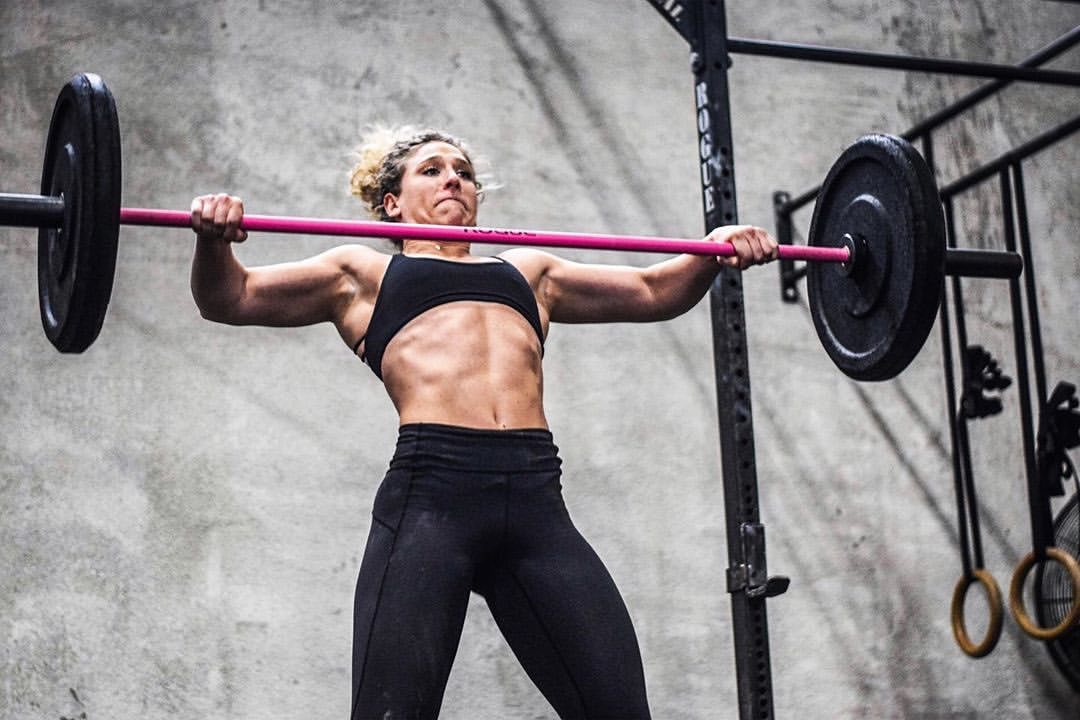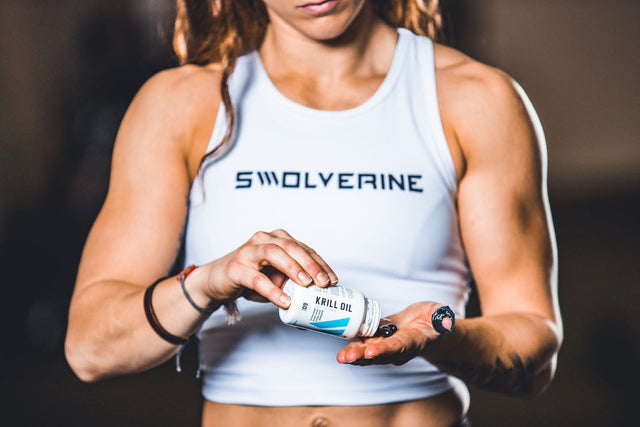Burning body fat and increasing lean muscle mass are the two most sought after and commonly shared fitness goals amongst the majority of gym enthusiasts. But, burning body fat in lieu of increasing muscle mass is no easy task. With the right exercise program and nutrition protocol, you can burn body fat and increase your lean muscle mass. But cleaning up your diet is not enough. And just lifting heavy weights won’t work either. To maximize your results you need a plan. A systematic combination of resistance training, cardio, supplementation, and a customized nutrition program to get the washboard abs you’ve been dreaming of. Not to mention a heavy dose of dedication and consistency, to transform your physique and become healthier. So, let’s get started.
Step 1: Resistance Training
Resistance training also known as strength training is the best way to gain lean muscle mass while burning body fat. The more lean muscle mass you have, the higher your basal metabolic rate, which means your body burns more calories at rest. Every pound of lean muscle mass will burn roughly six calories per day at rest. That’s around three times as many calories as a pound of fat, which burns around two calories per day. Let’s talk about what that really means. If you gain ten pounds of lean muscle mass and lose ten pounds of body fat, you’ll burn an extra 40 calories per day at rest. It doesn’t sound like much, but 40 calories per day can make a huge difference in the long run; especially if you’re looking to make a major weight loss transformation.
Additionally, by adding more muscle mass you’ll also be able to increase the intensity of your workouts. By working out harder for a longer period of time you’ll burn more body fat and increase muscle mass.
Excess Post Exercise Oxygen Consumption (EPOC)
After strength training, your metabolism stays elevated through a process called excess post-exercise oxygen consumption (EPOC). EPOC also know as the afterburn effect, refers to the oxygen and energy (in calories) it takes for your body to repair your muscle tissue during recovery. EPOC can be a major contributor to your total daily caloric expenditure by increasing your body’s thermic effect [R]. Prolonged workouts with more intense resistance training at heavier weights have been associated with a more substantial EPOC [R].
Compound Movements
Now that you know resistance training is one of the key components to getting shredded, what type of strength training should you do? Good question.
Compound movements involve multiple joints and stimulate more than one muscle group at the same time. Translation, excess burned calories and bigger gains in muscle mass. Exercises and lifts such as deadlifts, push press, bench press, or squats provide for a more effective workout because they stimulate all your major muscle groups at once. This means that you’ll build the greatest amount of strength, in the shortest period of time. Even without heavyweight, compound movements at a high-volume will still help you get stronger, faster than simply using isolated movements such as bicep curls or exercise machines. Not only that, but compound movements increase core strength and can fix postural imbalances created by poor posture, injuries, and weight machines.
RELATED ARTICLE How to Get Stronger In 3 Simple Steps
Step 2 High-Intensity Interval Training (HIIT)
High-intensity interval training (HIIT) is a mode of exercise training that consists of resistance and circuit training. HIIT is one of the best exercise methodologies to burn body fat. By incorporating lightweights with circuit training, you can successfully elevate your heart rate while increasing muscle mass through moderate load resistance training.
An example would be 10 burpees immediately followed by 10 push-press, air squats, and finished off with 10-meter sprints. Of course, there are hundreds of variations and workouts you can perform, HIIT is a great way to get your cardio in without the monotony.
Research has shown that HIIT can optimize body composition by reducing body fat, optimizing lipid profiles and improving aerobic and anaerobic performance. Incorporating HIIT training in your weekly routine can help you achieve your goals of shredding body fat and building lean muscle mass. Pairing resistance training with a HIIT workout will help elevate heart rate and burn more body fat. Remember, the more intense the workout the more substantial your EPOC, especially when paired with compound movements.
Moderate Cardio
If HIIT isn’t your jam, then instead you can perform moderate cardio such as jogging, cycling, or stair stepping for 30-45 minutes at 60-70% of your maximum heart rate, after your resistance training. This will help put your heart rate at an optimal fat-burning zone, especially after your workout.
Step 3: Customized Nutrition Program
The key to losing body fat and building lean muscle mass is through optimizing your diet and nutrition. The more muscle mass you have, the more calories you burn at rest, which means better results.
Everyone has different nutritional requirements and it’s important that you optimize your nutrition, with whole-foods, clean carbohydrates, quality lean proteins, and healthy fats. Crash dieting will only lower your testosterone levels and add more body fat. Just because your friends lost a few pounds going Keto, does not necessarily mean it will work well for you and your lifestyle. Creating a meal plan, personalized for you is the only way you’ll reach your goals.
RELATED ARTICLE How To Create An Amazing Nutrition Plan
If you’re trying to eat cleaner and create a healthier lifestyle, check out THE SWOLE KITCHEN. Take a brief survey, so we can find out how to create the best custom nutrition program for you and your goals. Then, get connected with your personal nutrition coach, and start getting the results you've been waiting for.
Eat More Protein
Protein is the macronutrient that is responsible for building muscle mass. Because it stimulates the biological process of Muscle Protein Synthesis (MPS), it's vital to increase the amount of protein in your diet.
According to a study published in The American Journal Of Clinical Nutrition, a randomized double-blind trial was conducted to find if a greater intake of protein, during a calorie deficit helps to build lean muscle mass and burn body fat, when combined with high-intensity training. Researchers divided 20 male subjects into two randomized groups and assigned one group to follow a higher-protein diet than the other (2.4 grams per kilogram body weight per day versus 1.2).
During a period of 4 weeks, both groups performed a combination of resistance and high-intensity interval training six days per week. The results indicated, that the higher-protein group lost more body fat than those in the lower-protein group, and also managed to gain muscle, despite eating fewer calories than their bodies required [R].
Keep in mind, not all sources of protein are created equal. Just because you ate a granola bar that said, ‘8 grams of protein’ on the wrapper, does not mean it was a quality source of protein. Eating wholesome, hormone free, organic, and grass-fed sources of lean protein avoid inflammation and help keep your body running at optimal levels, to help you make real gains. But which protein sources are the best to build muscle and burn fat?
High-Quality Sources of Protein
- Shrimp
- Tuna
- Salmon
- Chicken
- Turkey
- Beef
- Pork
- Whey Protein Isolate
Now, just because you eat protein does not mean that you’re automatically going to build muscle. If that were the case, we’d all look like Arnold and be slamming protein shakes for every meal of the day. So how much protein do you need to eat, so you can build a killer physique?
A common misconception is that the more protein you eat, the more muscle mass and strength you’ll ultimately gain. Wrong. The amount of protein you need is different for everyone and your body can only utilize so much. Not to mention, we’re all different and have different goals and priorities.
The real challenge is eating enough while also making the right nutritional choices so your body properly utilizes body fat for fuel to improve overall body composition.
Jorn Trommelen puts it perfectly, in his comparison of minimalists to optimists.
“Minimalists want to do as little as possible, while still getting a decent chunk of the results. Minimalists want fitness to enrich their lives, not be a slave to it. My recommendation is a daily protein intake of at least 120g. That should give pretty good results, without worrying about small incremental gains by further increasing protein intake and worrying about quality or distribution.
Optimists are willing to put in more effort if there is enough evidence that indicates their effort will produce reasonable additional results. My recommendation is four meals spaced throughout the day (e.g. breakfast, lunch, dinner, and pre-sleep) that contain 40g of protein, with most protein coming from animal-based sources. Compared to the minimalists, this is a higher daily total protein intake and includes attention to protein quality and distribution.”
How Much Protein Do I Need?
It’s like this, for those of you doing high-intensity training and resistance training, protein requirements are generally around 1.4-2.0 g/kg (or around 0.64-0.9 g/lb) of body mass, to build strength and muscle mass. If you’re looking for a way to increase your protein intake that will help you build muscle mass and burn body fat, I recommend Whey Protein Isolate. It’s the best source of protein to help you meet your goals.
RELATED ARTICLE What Is The Best Protein For Gaining Muscle Mass?
RECOMMENDED PRODUCT Whey Protein Isolate (Chocolate/Vanilla 30 Servings)
However, the basic recommendation for protein intake is 0.8 grams per kilogram (or around 0.36 g per pound) of body mass in untrained, generally healthy adults. For instance, a 150 lb (68 kg) person would consume around 54 grams a day.
Step 4: Supplementation
Essential vitamins and minerals such as Krill Oil, Vitamin D3, and Multivitamins are meant to help bridge the gaps in your diet and be used as a preventative measure against the aging process; physically, cognitively, and functionally. No one has a perfect diet. It’s literally impossible to nourish your body with all the nutrients it requires for optimum function. However, sports performance supplements are different. Sports supplements are made to enhance your aerobic and anaerobic thresholds, peak performance and overall workout capacity. They work to increase strength, improve endurance, and optimize recovery times so you can build muscle mass and optimize body composition at a faster rate. Additionally, they’ll help you surpass strength thresholds and hit new PRs.
What are the best supplements to help increase strength and burn body fat?
There are several sports supplements that can improve overall performance. However, it’s important to supplement ingredients that have a substantial amount of clinical evidence in support of their performance measures. It’s also equally as important to use products that are clinically dosed and proprietary blend free.
RELATED ARTICLE What Is A Proprietary Blend In Supplements?
Below are some of the best supplements to help you build muscle mass and burn body fat
- Beta-Alanine: Beta-alanine helps buffer the buildup of lactic acid or the burning sensation in your muscles, that results in a loss of power. By delaying muscle fatigue, you can increase rep volume. More reps mean more burned body fat and increased muscle mass.
- Citrulline Malate: Citrulline Malate naturally promotes the release of nitric oxide. Nitric oxide is a vasodilator, which widens blood vessels, increasing the amount of blood and oxygen delivered to muscle tissue. With more oxygen and blood transport, you’ll increase muscle mass, improve recovery times, and even increase your endurance.
- Kre-Alkalyn: Kre-alkalyn is a patented pH corrected form of creatine. Creatine helps increase power and performance, especially during short bouts of exercise. More power means more muscle mass and strength. It’s one of the best supplements to use especially during HIIT.
- BCAA: BCAAs are comprised of essential amino acids, which help your body rebuild and repair lean muscle mass. Your body utilizes amino acids for fuel, especially during your workouts. Without an adequate amount of amino acids, you won’t be able to successfully build more lean muscle mass.
- Whey Protein Isolate: Whey protein isolate, is a cross-filtered, isolated form of protein. It filters the carbs, fat, and lactose from normal whey protein, so you can get a more purified and potent protein content. Studies have proven that Whey Protein Isolate is the best type of protein to help build muscle mass and burn body fat.
How To Burn Body Fat While Building Muscle Mass: Takeaway
Burning body fat and building muscle mass logically goes hand-in-hand. By putting these four simple steps into practice, you will unquestionably meet your health and fitness goals and get the physique you want. The most important thing to remember is that change takes time, dedication, and consistency. Everyone is different. Everyone has different nutrient requirements for their unique biology. That's why cookie-cutter meal plans and Instagram science won't work. You need a plan, made specifically for you, to help you reach your goals. Without a plan, you'll never truly reach your human potential.
Want to maximize your body composition goals?
The BUILD Stack was created to help you build ultimate athletic performance. With the vital nutrients, you need for strength, endurance, and recovery, you'll be able to burn body fat and increase lean muscle mass at a faster rate.
SWOLVERINE is an endurance athlete and active lifestyle brand. Made for the elite athlete, and the strong-willed our products were designed to fuel your athletic performance. We perform when you perform.
We believe that everyone can optimize not only their athletic performance but their human potential. The way we believe we can optimize performance is through transparency, clinically effective doses, and clinically proven ingredients with evidence-based outcomes. We provide the nutrients you need to power your active lifestyle.
References
Laforgia J, Withers RT, Gore CJ. Effects of exercise intensity and duration on the excess post-exercise oxygen consumption. J Sports Sci. 2006;24(12):1247-64.
Børsheim E, Bahr R. Effect of exercise intensity, duration and mode on post-exercise oxygen consumption. Sports Med. 2003;33(14):1037-60
Ouerghi, Nejmeddine et al. “Effects of high-intensity interval training on body composition, aerobic and anaerobic performance and plasma lipids in overweight/obese and normal-weight young men.” Biology of sport vol. 34,4 (2017): 385-392. doi:10.5114/biolsport.2017.69827
Thomas M Longland, Sara Y Oikawa, Cameron J Mitchell, Michaela C Devries, Stuart M Phillips, Higher compared with lower dietary protein during an energy deficit combined with intense exercise promotes greater lean mass gain and fat mass loss: a randomized trial, The American Journal of Clinical Nutrition, Volume 103, Issue 3, March 2016, Pages 738–746.







